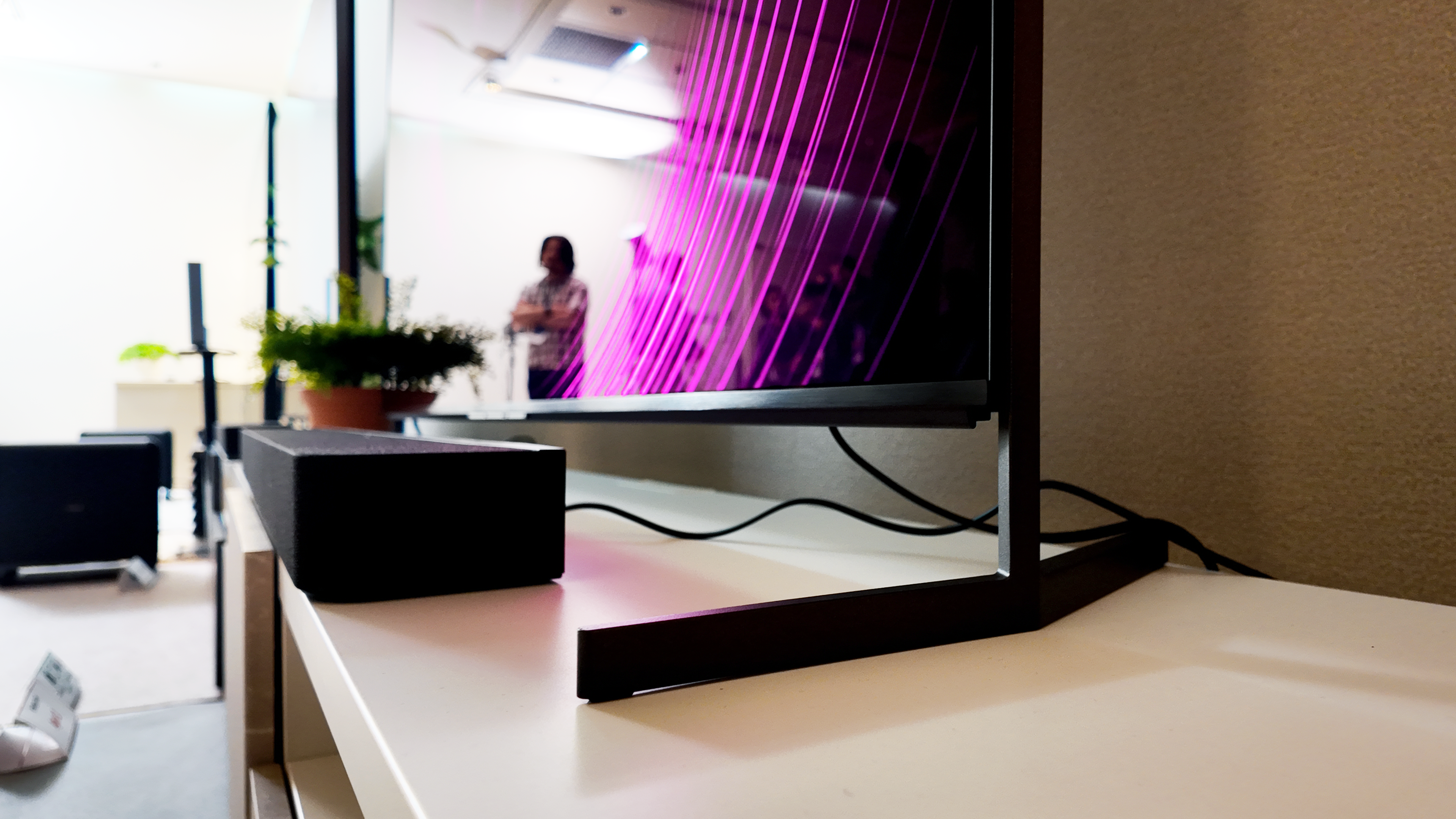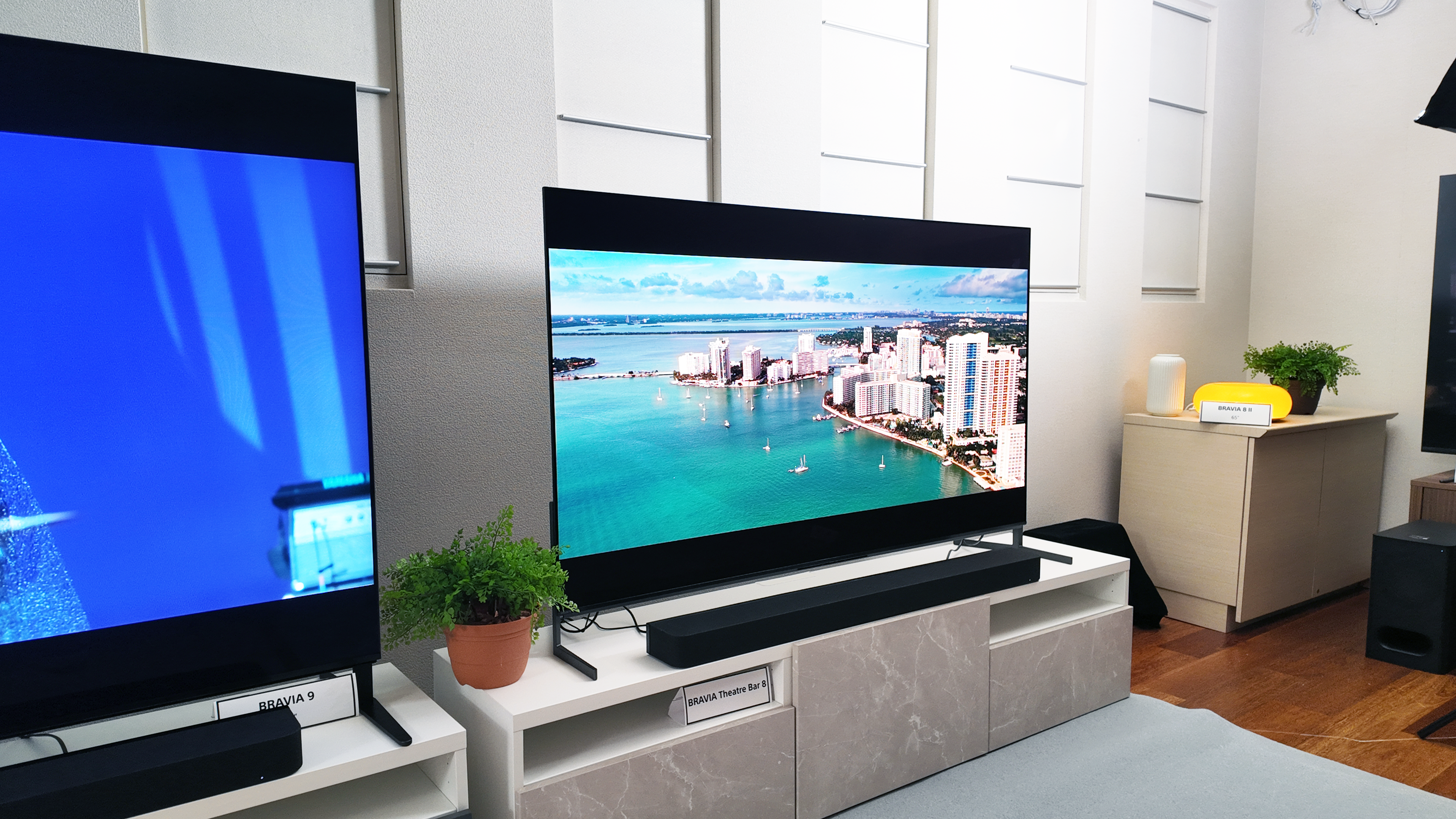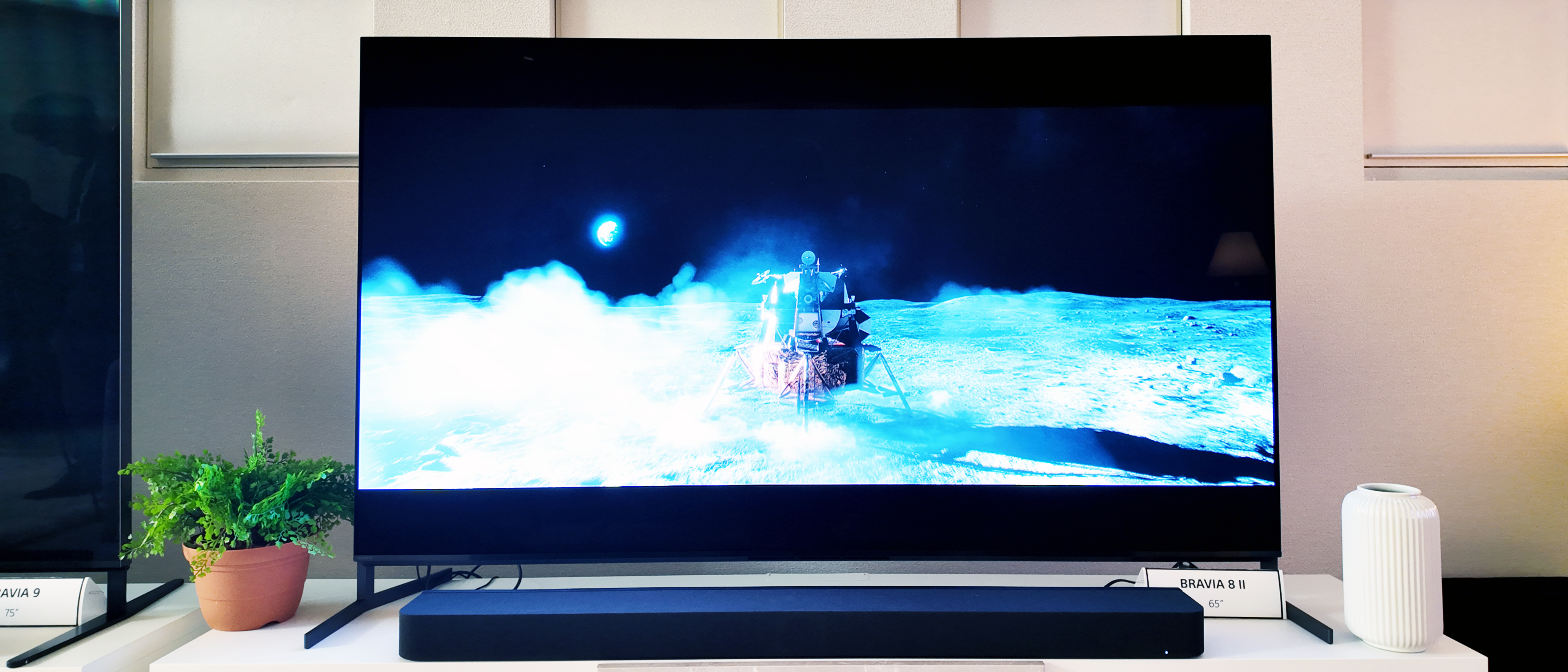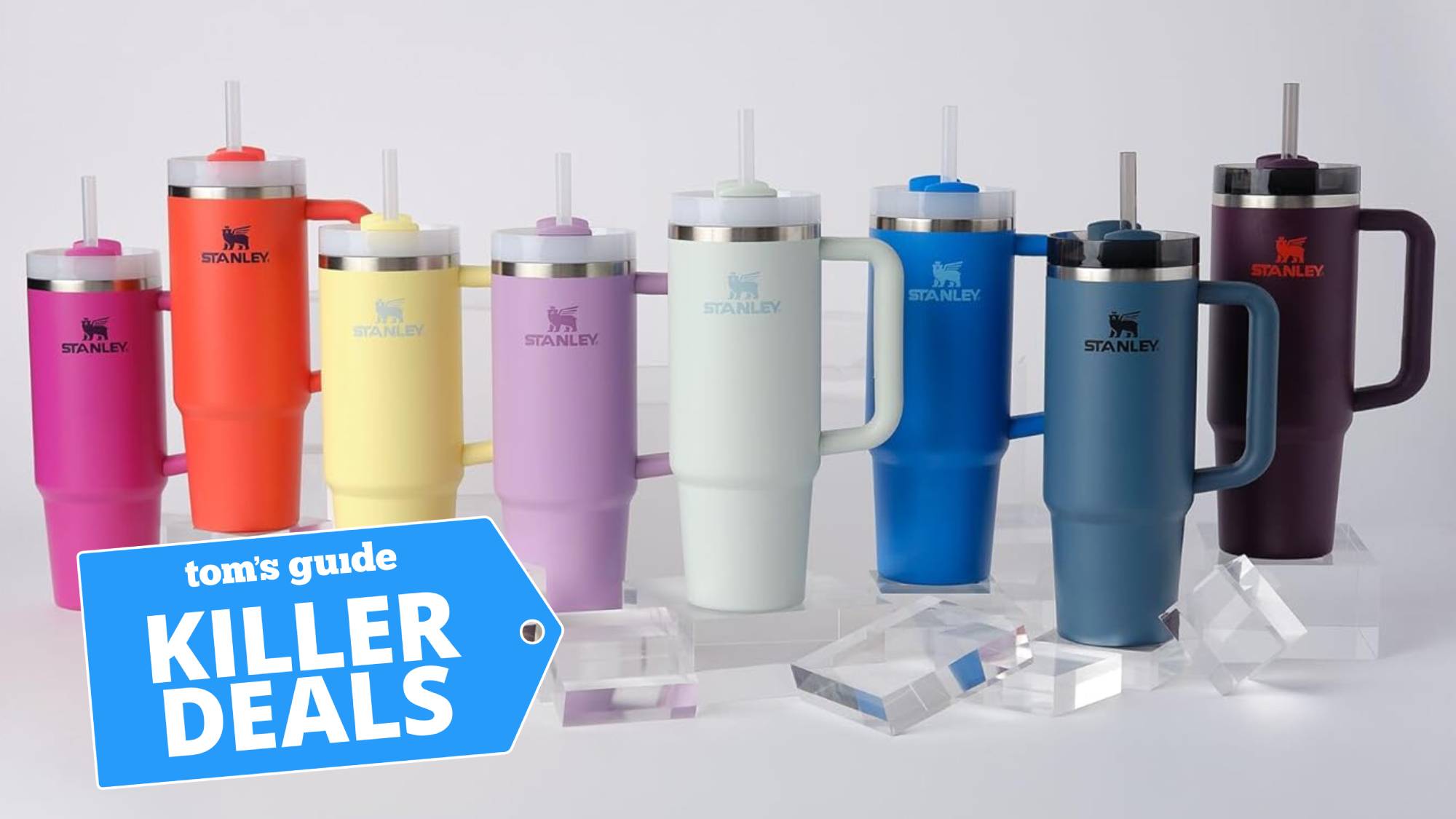Early Verdict
The Sony Bravia 8 II OLED TV, coming in 55- and 65-inch sizes, could be this year's OLED TV to beat thanks to impressive HDR performance based on my first impressions.
Pros
- +
HDR performance
- +
Premium design
- +
Proven audio features
Cons
- -
Only 2 size options
Why you can trust Tom's Guide
If you ask anyone who spends a lot of time with premium TVs, they'll probably tell you that the Sony A95L Bravia OLED TV is one of the best TVs ever made.
Whether that’ll also be the case for the Sony Bravia 8 II remains to be seen, but having checked out Sony’s new best TV for 2025 in person, the chances seem high.
The Bravia 8 II (referred to as ‘mark 2’) is technically an evolution of the A95L, promising HDR advancements and stronger picture processing capabilities across the Quantum Dot OLED (QD-OLED) display.
But the A95L will remain available to purchase in the 77-inch size, while the Bravia 8 II will only come in 55-inch and 65-inch configurations.
Size limitations aside, the Bravia 8 will be stacked up against the likes of the LG G5 OLED TV and Samsung S95F OLED when it comes to ranking the best OLED TVs. How the rankings fall will depend on our full reviews, which are coming soon.
Here’s what you can expect from the Sony Bravia 8 II based on my first impressions.
Sony Bravia 8 II: Price and availability
While Sony hasn’t officially confirmed pricing for the Bravia 8 II, I can make an educated guess based on the A95L’s launch prices: $2,800 for the 55-inch and $3,500 for the 65-inch.
I’m expecting the Bravia 8 II to fall within a similar range. As for release timing, by previewing its 2025 TVs now, Sony is hinting at a mid-2025 launch. The exact dates remain unconfirmed, so stay tuned for official pricing and availability announcements. I anticipate they’ll be coming soon.
Sony Bravia 8 II: Upgrades and features
Design and Sizes
The Bravia 8 II continues Sony’s One Slate design seen on the A95L, delivering a sleek, minimalist aesthetic with multi-position feet for flexible placement.
However, unlike the A95L, which offered a 77-inch model, the Bravia 8 II will only be available in 55-inch and 65-inch sizes. This makes it an evolution rather than a full-on replacement, though the limited screen sizes might put it at a disadvantage. LG’s G5 OLED will offer more size options, including an 83-inch model.
For larger size options, shoppers might want to consider a Mini-LED TV instead of an OLED. The 2025 Sony Bravia 5 goes up to 98 inches, and in general the size flexibility between OLED vs. Mini-LED TVs might be better depending on what size TV you should buy.

Picture Quality and HDR performance
One of the biggest advancements in the Bravia 8 II is its HDR handling. When I viewed a high dynamic range sunrise scene compared to Sony’s reference monitor, I noticed a significant difference in quality compared to some other competitor OLED TVs from last year. Instead of the usual clipped highlights, I could see a well-defined sun with smooth color transitions and more refined details.
Gradation tones also stood out, with subtle highlights delivering a more natural and lifelike image. This enhancement extends to color accuracy, ensuring that skin tones remain realistic without the over-saturation that sometimes occurs when displays push brightness too far.
Acoustic Surface Audio+ and Acoustic Center Sync
For the Bravia 8 II, Sony continues to use Acoustic Surface Audio+, where the TV’s screen itself acts as the speaker. This technology provides a more immersive sound experience by delivering audio directly from the screen, aligning dialogue and sound effects precisely with the action.
While Sony has a reputation for creating some of the best-sounding TVs, most users will likely still opt for one of the best soundbars. Sony’s Acoustic Center Sync feature allows its soundbars to work in harmony with the TV’s speakers for a more cohesive soundstage.

Google TV
Sony is also sticking to Google TV for the Bravia 8 II. Unlike the brand’s competitors in the premium market that use proprietary software platforms, Sony TVs rely on a similar Google TV experience to that you’ll get on Hisense and TCL TVs.
I will say LG’s webOS is my favorite of the options out there, but Google TV is rather intuitive when it comes to content recommendations and support for the best streaming services. It also plays nicely with other Google services or hardware you might use.
Sony Bravia 8 II: Outlook
The Bravia 8 II is hoping to refine what made the A95L a standout, improving HDR performance, color accuracy, and maintaining Sony’s exceptional design and audio features. If Sony’s processing and backlight control continue their trend of excellence, this TV could very well be one of the best OLEDs of 2025 — or perhaps even the best overall.
However, the limited size options and competition from LG’s expanding OLED lineup may influence buying decisions. Plus, I’ll need to benchmark the performance to see how it actually compares to the other hot OLED TVs of 2025 before making any changes to our TV rankings.
Kate Kozuch is the managing editor of social and video at Tom’s Guide. She writes about smartwatches, TVs, audio devices, and some cooking appliances, too. Kate appears on Fox News to talk tech trends and runs the Tom's Guide TikTok account, which you should be following if you don't already. When she’s not filming tech videos, you can find her taking up a new sport, mastering the NYT Crossword or channeling her inner celebrity chef.
You must confirm your public display name before commenting
Please logout and then login again, you will then be prompted to enter your display name.


